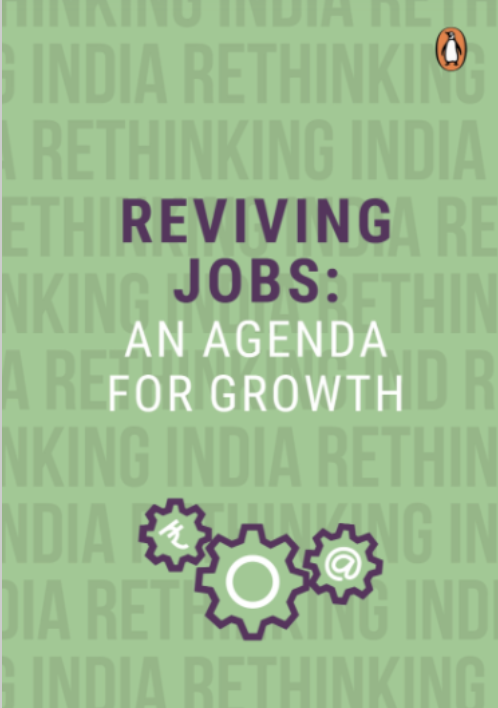Book Chapter
Building the Workforce for India's Emerging Clean Energy
Neeraj Kuldeep, Arunabha Ghosh
June 2020 | Energy Transitions, Sustainable Livelihoods
Suggested citation: Kuldeep, Neeraj, and Arunabha Ghosh. 2020. ”Building the Workforce for India’s Emerging Clean Energy Sector” in Reviving Jobs: An Agenda for Growth, edited by Santosh Mehrotra. Gurgaon: Penguin Random House.
Overview
This chapter highlights the total employment generation potential of India’s renewable energy targets. It also offers estimates for an emerging electric mobility sector. This chapter also provides authoritative data on workers in the solar and wind sectors based on primary surveys. Further, it explores the potential of local manufacturing and greater synergies between clean energy and electric mobility. Moreover, it outlines challenges in building the workforce in the sector, and also offers pragmatic solutions to these problems.
Key Highlights
Employment Coefficients (jobs/MW/year) for Renewable Energy Technologies

Source: Author's analysis
- Renewables have dominated India’s power sector investments since 2015.
- Employment in the renewable energy industry can be classified into three categories: direct jobs, indirect jobs and induced jobs.
- India’s targets of 1,00,000 MW of solar and 60,000 MW of wind power capacity are likely to generate about 1.3 million direct jobs on a full-time equivalent (FTE) basis.
- A million FTE jobs translate into a workforce of 3,30,000 people as not all activities require a person to be employed throughout the year. This workforce is likely to grow even more as renewable energy targets are raised.
- The type of clean energy project also plays a role in determining the job potential, illustrated in the graph below.
- DRE (Distributed Renewable Energy) is a major job creator.
- The clean energy transition will create jobs for both skilled and unskilled workers. The business development phase requires skilled and trained professionals, the design and pre-construction requires skilled technical personable, while the construction and O&M would require mostly semi and low-skilled workers.
- Women constitute only 11 per cent of the total workforce in the clean energy sector.
- The uncertainties in long-term prospects of the sector, brought about by fluctuations in financial policies and economic slowdowns, hold back job growth.
- The large-scale solar and wind power projects are located in remote locations, often with harsh weather conditions. Many engineers would be unwilling to spend a year or more in such harsh conditions. Hence, a skilled workforce is harder to find.
- The industry has not been able to build a workforce with adequate skills needed for the rapid deployment necessary to meet targets.
- The training programs are not tailored to meet the needs of the industry, and often do not provide the necessary technical knowledge and practical training to perform precision tasks.
- The poor quality of training results in lower salaries for trainees, which deters participation of additional manpower in the sector.
- The government launched the Suryamitra program in 2016 to create skilled manpower of 50,000 professionals in the solar energy sector. But this program has many shortcomings, CEEW’s research and interactions with renewable energy developers have indicated that the training is inadequate.
- Due to the inadequate training, graduates of the Suryamitra program, or “Suryamitras,” as they are referred to, are offered low remunerations.
Key Recommendations
- Increase demand certainty in the renewable energy sector to inspire confidence and attract more to its fold.
- Increase the demand for renewable energy at the central and state government levels, and also at the district and city levels.
- Promote the DRE (distributed renewable energy) sector in order to grow employment opportunities.
- Renew focus on smaller capacity installations such as rooftop solar, biomass power, and small hydro.
- Build a nimble workforce to drive innovation and technology.
- Adopt information and communications technology to continue training workers at plant locations via video conferences.
- Create a local manufacturing industry for renewable energy and clean energy technologies.
India’s targets of 1,00,000 MW of solar and 60,000 MW of wind power capacity are likely to generate about 1.3 million direct jobs on a full-time equivalent (FTE) basis.








